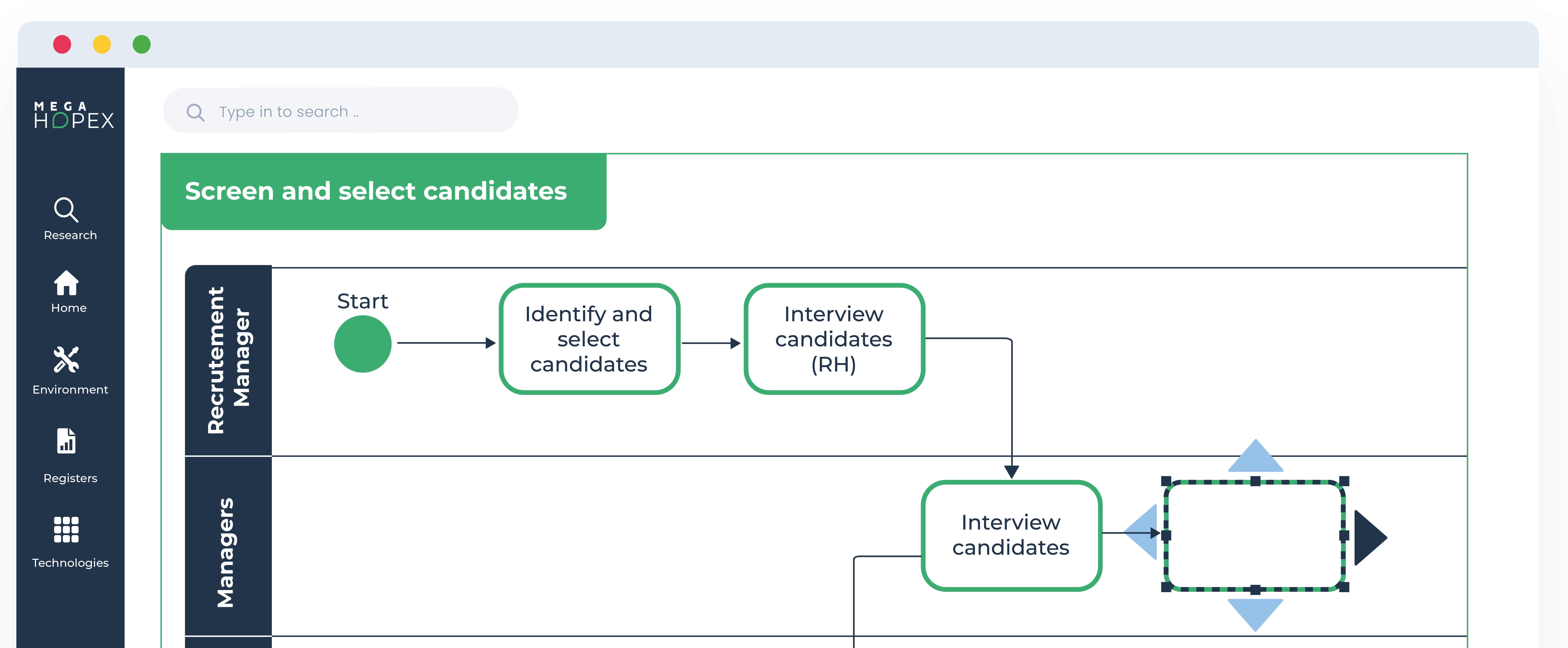
Business Process Automation: Streamlining Efficiency for Modern Enterprises
Business Process Automation (BPA) is the process of using automation tools and technologies to automate business processes, resulting in increased efficiency and productivity. BPA allows you to streamline your workflow by reducing the required manual work, freeing up your time to focus on other essential tasks.
Introduction to Business Process Automation
Business Process Automation, or BPA, uses technology to automate business processes. BPA involves using automation software and other tools to streamline your business processes, reducing the required manual work.
Why is Business Process Automation important?
BPA is important because it allows you to automate repetitive tasks, reducing errors and freeing up your time to focus on other important tasks. Automation can also help you to streamline your workflow, allowing you to get things done more quickly and efficiently. Additionally, BPA can help to improve customer satisfaction by reducing wait times and improving accuracy.
Benefits of Business Process Automation
Implementing Business Process Automation offers numerous benefits for modern enterprises. Some of the key advantages include:
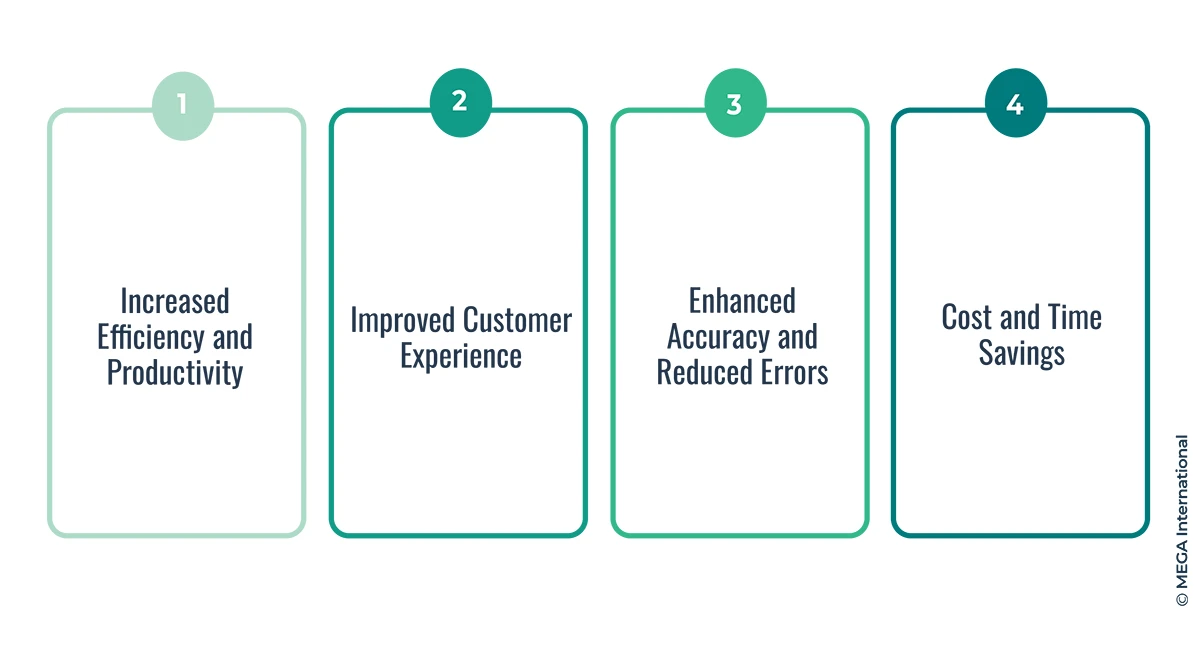
1. Increased Efficiency and Productivity
By automating repetitive tasks, BPA allows employees to focus on more strategic and value-added activities. This leads to increased efficiency and productivity across the organization.
2. Enhanced Accuracy and Reduced Errors
Automated systems minimize the likelihood of human error, ensuring that processes are executed consistently and accurately. This leads to improved data quality and reduced rework.
3. Cost and Time Savings
Automation eliminates manual intervention, reducing labor costs and saving time. Additionally, streamlined processes result in faster turnaround times, enabling organizations to meet deadlines more efficiently.
4. Improved Customer Experience
Efficient processes enabled by BPA contribute to better customer experiences. Automation ensures prompt and accurate responses to customer inquiries, leading to higher satisfaction levels.
How to Automate Business Processes?
Examples of Business Process Automation
Examples of business process automation include automating the purchase order process, data entry, and onboarding process for new employees. These are just a few examples of how you can use automation to streamline your business processes and improve efficiency.
Use cases for Business Process Automation.
Business Process Automation can be used in various use cases, including procurement, finance, human resources, and customer service. Automating business processes in these areas can improve efficiency and productivity, reduce errors, and improve customer satisfaction.
The Need for Business Process Automation
The need for Business Process Automation is driven by the need to improve efficiency and productivity. By automating repetitive tasks, you can free up your time to focus on other important tasks. Additionally, automation can help to reduce errors and improve customer satisfaction.
Automate Repetitive Tasks with RPA
RPA is an excellent tool for automating repetitive tasks. By using bots to perform these tasks, you can free up your time to focus on other essential tasks while reducing errors and improving efficiency.
Key Components of Business Process Automation
What exactly are the critical components of BPA? To build an effective BPA system, businesses must understand the different elements of the process. These components include:
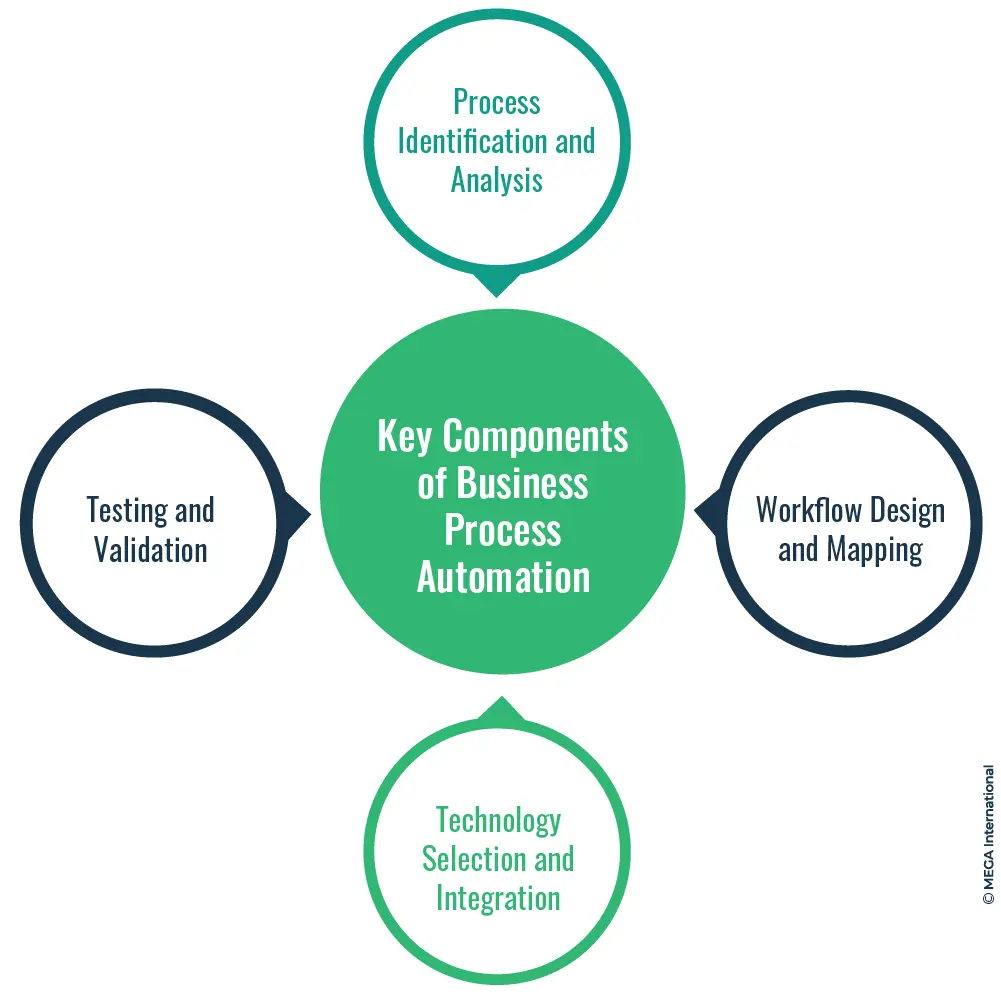
1. Process Identification and Analysis
The first step in BPA is identifying the processes that can benefit from automation. This involves analyzing existing workflows, understanding pain points, and identifying areas of improvement.
2. Technology Selection and Integration
Selecting the right automation tools and integrating them seamlessly with existing systems is crucial. Organizations must evaluate available options and choose solutions that align with their requirements.
3. Workflow Design and Mapping
Once the processes to be automated are identified, designing a streamlined workflow becomes essential. This includes mapping out the sequence of tasks, defining decision points, and setting up rules for process execution.
4. Testing and Validation
Thorough testing and validation of the automated processes are necessary to ensure smooth execution. This involves identifying potential issues, debugging, and refining the workflow to optimize performance.
Deploying Business Process Automation in Your Business
Employee Onboarding and BPA
One area where BPA can be particularly effective is in the onboarding process for new employees. Automating this process can reduce errors and improve efficiency, freeing your time to focus on other tasks.
End-to-End Automation
End-to-End Automation involves automating an entire business process from start to finish. This approach can be particularly effective in improving efficiency and reducing errors.
Types of Business Process Automation Software and Automation Tools
There are many different types of BPA software and automation tools available. Some of the most popular include workflow automation software, RPA software, and process automation systems. When choosing a BPA solution, it's important to consider your specific needs and goals.
Best Practices for Business Process Automation
Low-Code Platforms and Process Automation Tools
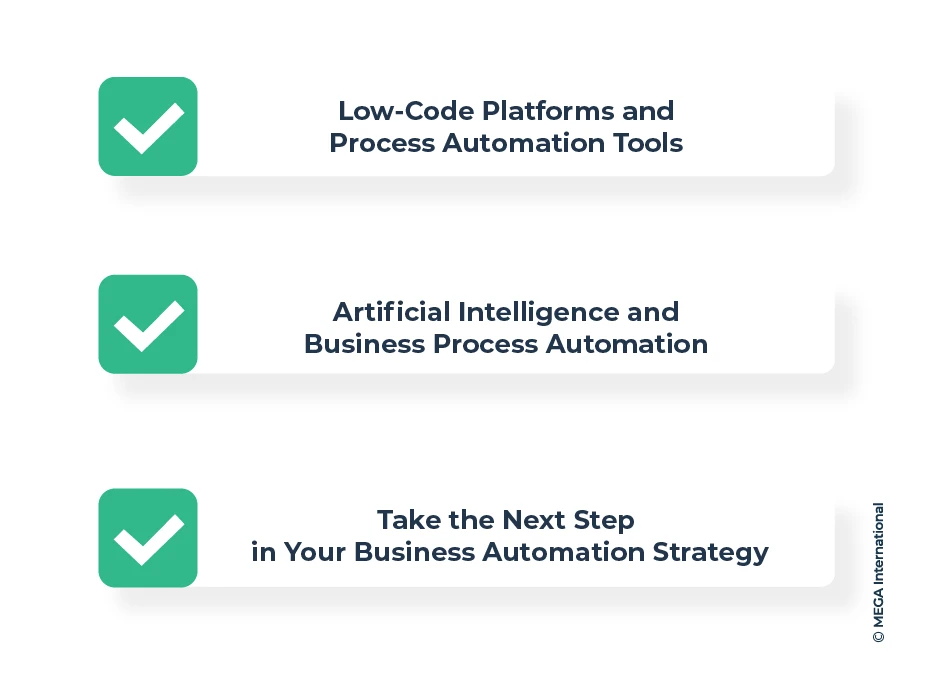
Low-Code Platforms and Process Automation tools can effectively simplify the process of implementing BPA. Using these tools, you can automate complex processes without extensive programming knowledge.
Artificial Intelligence and Business Process Automation
Artificial Intelligence (AI) can be effective in improving the effectiveness of BPA. By using AI, you can automate more complex processes and improve the accuracy of automation tools.
Take the Next Step in Your Business Automation Strategy
If you're interested in automating your business processes, the first step is to identify areas of your business that could benefit from automation. Once you've identified these areas, you can start researching the best BPA solutions for your needs.
Challenges in Business Process Automation
Implementing automation solutions can sometimes be challenging, especially when overcoming technical and cultural barriers. One of the main challenges in automating business processes is identifying the right process to automate.
Countless processes within an organization can be automated, but not all are suitable or beneficial for automation. Choosing the right process requires a thorough analysis of the current workflow and identifying the areas that require automation to achieve the desired outcome.
Another significant challenge in automation is integrating new technology with existing systems. This challenge is primarily technical and requires a comprehensive understanding of the organization's current system architecture.
Failing to integrate the automation solutions properly with the existing systems can lead to inefficiencies in the workflow, duplicating efforts, and even data inconsistencies, which can impact the quality of the services provided.
Besides the technical challenges, cultural barriers can impede the successful implementation of automation solutions. Embracing change is one of the crucial factors in successfully implementing automation, and sometimes, it can be challenging to convince employees to adapt to new workflows.
Communication and transparency play a vital role in overcoming cultural barriers. It is essential to communicate the benefits of automation and its potential impact on workflows so that employees can understand and appreciate its importance.
Moreover, the cost can also significantly hinder the implementation of automation solutions. The initial investment required for implementing automation solutions can be high. Still, the benefits of automation, such as reducing lead times, lowering operating costs, and improving productivity, can outweigh the initial cost. Effective planning and budgeting can help reduce the financial burden and motivate the stakeholders to invest in automation.
The Future of Business Process Automation
As technology continues to evolve, the future of Business Process Automation looks promising. Advancements in artificial intelligence, machine learning, and robotic process automation will further enhance the capabilities of BPA. Organizations can expect increased automation adoption, improved efficiency, and greater competitive advantage.
Business Process Automation and the Use of artificial intelligence
AI encompasses various subfields, including machine learning, natural language processing, computer vision, and robotics. These technologies enable machines to learn from data, make predictions, understand and generate human language and perceive and interpret visual information.
Integrating AI and Business Process Automation creates a powerful synergy that enhances the capabilities of automation systems. AI augments BPA by enabling machines to analyze data, learn from patterns, make intelligent decisions, and adapt to changing circumstances.
This synergy automates repetitive tasks and adds cognitive abilities, enabling organizations to tackle complex processes and derive valuable insights from data.
Real-world Use Cases of AI-powered Business Process Automation
AI-powered Business Process Automation finds application in various industries. Here are a few examples:
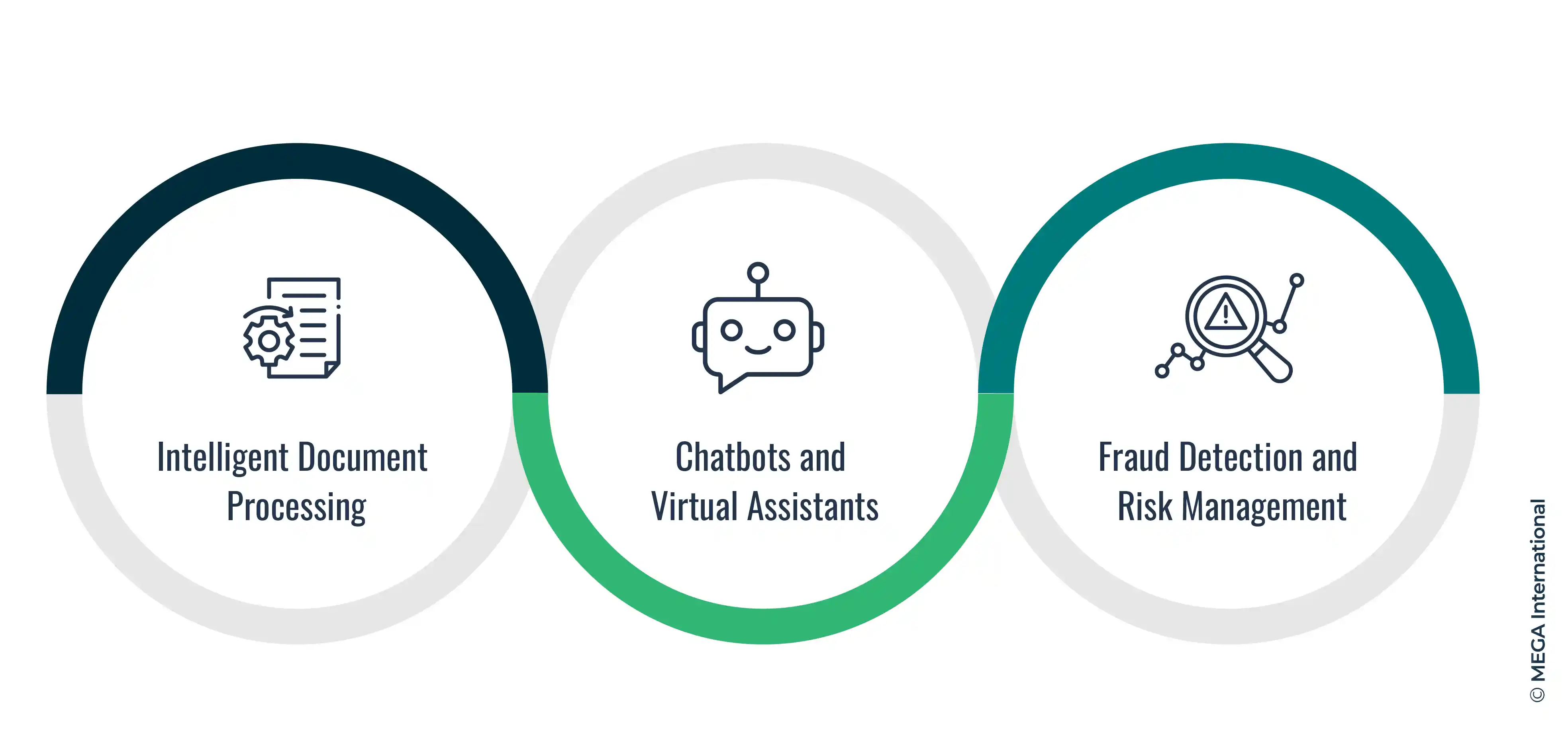
1. Intelligent Document Processing
AI algorithms can automatically extract relevant information from unstructured documents, such as invoices or contracts. This eliminates manual data entry and accelerates document processing and analysis.
2. Chatbots and Virtual Assistants
AI-powered chatbots and virtual assistants automate customer support and engagement processes. These systems can understand natural language, provide instant responses, and handle routine inquiries, freeing up human resources for more complex tasks.
3. Fraud Detection and Risk Management
AI algorithms can analyze vast amounts of data to identify patterns and anomalies associated with fraudulent activities. Organizations can mitigate risks and protect their assets by automating fraud detection and risk management processes.
As AI technologies continue to advance, the future of Business Process Automation looks promising. Advancements in machine learning, natural language processing, and computer vision will enable even more sophisticated automation systems.
Summary
Business Process Automation can be a powerful tool for improving the efficiency and productivity of your business. Automating repetitive tasks can free up your time to focus on other important tasks and improve customer satisfaction. When deploying BPA in your business, choosing the right automation tools and taking a systematic approach to implementation is important.
FAQs
Business Process Automation (BPA) is the technology-enabled automation of complex business processes, intending to streamline inefficient workflows, eliminate human error, increase productivity, and reduce costs. It involves using automation tools and software to automate a business process, which can be done without human intervention.
Examples of business process automation include automated invoicing, order fulfillment, inventory management, HR processes, financial reporting, customer onboarding, and account reconciliation.
Some use cases for business process automation include process optimization and standardization, reducing operational costs, increasing efficiency, improving customer experience, and reducing human error in critical processes.
Business Process Management (BPM) is a more holistic and strategic approach to managing business processes, including process design, modeling, analysis, and optimization. Business Process Automation (BPA) is a more tactical approach focusing on automating specific workflows or tasks within a larger business process. While BPA is part of BPM, they are not the same.
Robotic process automation (RPA) is a type of automation technology that uses software robots or "bots" to automate repetitive, routine tasks, such as data entry or file manipulation. While RPA and BPA are related, RPA is often used for narrower, rule-based tasks, while BPA focuses on automating end-to-end business processes.
Business Process Management (BPM) is a methodology for improving business processes by optimizing end-to-end workflows, identifying inefficiencies, and ensuring that processes are aligned with organizational goals. This can involve process mapping tools, automation software, and other process improvement techniques.
Learn more about BPM
Automation software automates specific tasks or workflows within a business process. This can range from simple, low-code applications to more complex, AI-powered solutions.
To automate a business process, you must first map out the process to understand the steps involved. Then, identify areas where automation can be applied, such as using automation software or tools. Finally, implement the automation solution, test it thoroughly, and monitor its performance to ensure it delivers the intended results.
Low code is a development methodology that allows developers to create applications using a visual interface and pre-built components rather than writing code from scratch. This can make it easier to develop automation solutions, as it can reduce the amount of coding required. Some automation tools, such as Microsoft Power Automate, use a low-code approach to make it easier for business users to automate their workflows.
Artificial intelligence (AI) can enhance business process automation by enabling more advanced automation scenarios, such as natural language processing (NLP), image recognition, and predictive analytics. This can help to streamline workflows further, reduce human error, and improve the accuracy and efficiency of business processes.
Advancements in AI technologies will further enhance automation capabilities, leading to increased adoption, improved decision-making, and enhanced customer experiences.
Related Content to Business Process Management
Get a clear understanding of how your operation runs, identify areas of improvement, and build scenarios to optimize and transform business processes;
MEGA HOPEX for BPM
Request a demonstration of HOPEX for BPM, and see how you can have immediate value of your projects.






